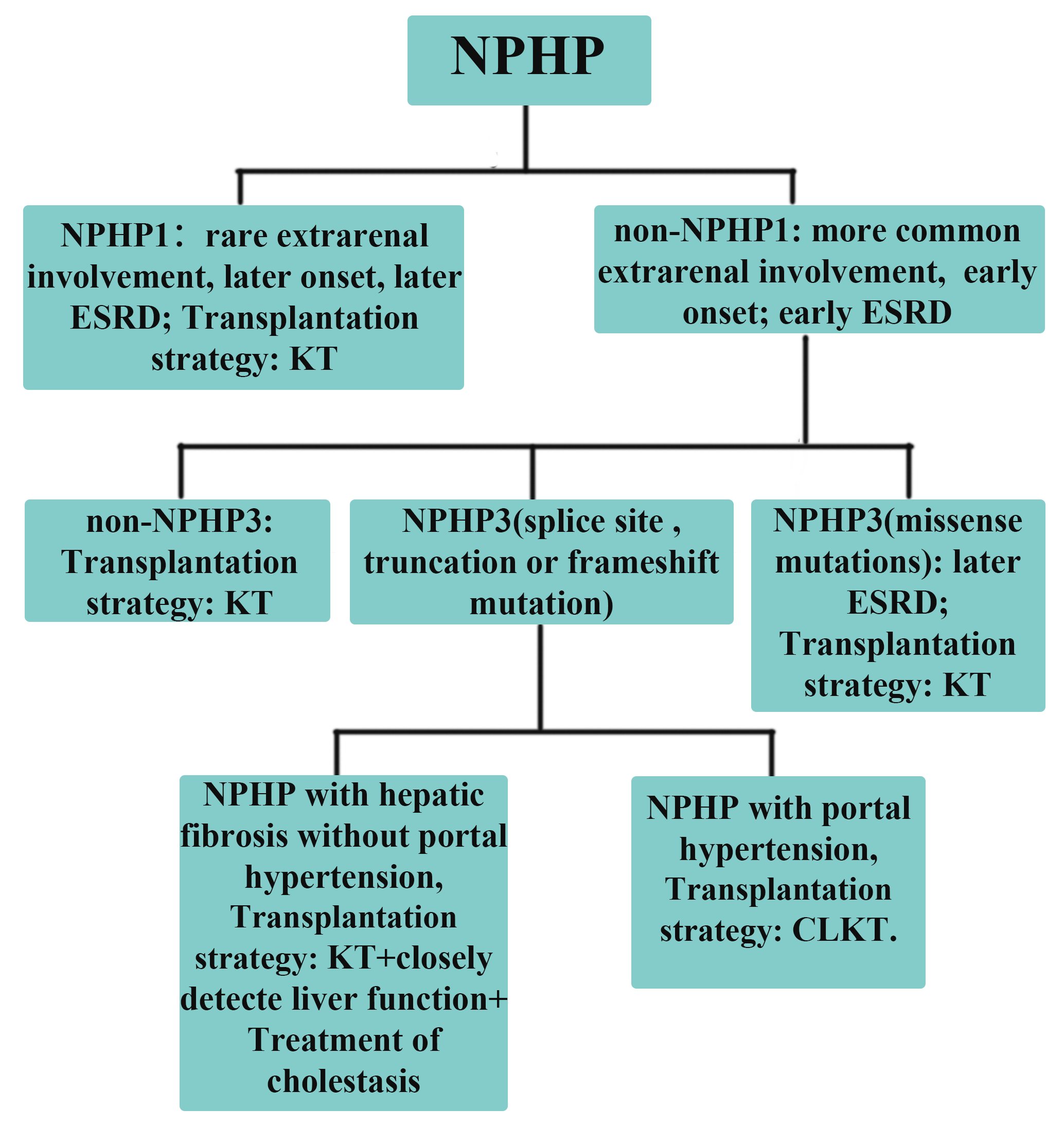Genotype and Phenotype Analysis and the Transplantation Strategy in Children with Uremia Caused by Nephronophthisis
Organ Transplant Center, The First Affiliated Hospital, Sun Yat-sen University, Guangzhou, China
Meeting: 2022 American Transplant Congress
Abstract number: 822
Keywords: Kidney transplantation, Nephropathy, Pediatric, Prognosis
Topic: Clinical Science » Kidney » 43 - Kidney: Pediatrics
Session Information
Session Time: 5:30pm-7:00pm
 Presentation Time: 5:30pm-7:00pm
Presentation Time: 5:30pm-7:00pm
Location: Hynes Halls C & D
*Purpose: Nephronophthisis- related ciliopathies(NPHP- RC), as an important cause of children’s end-stage renal disease(ESRD), has strong genotype and phenotype heterogeneity, and the transplantation strategy of NPHP with liver fibrosis is still controversial. This study aimed to explore the genotype and phenotype spectrum of kidney transplant children and analyze the transplantation strategies of different phenotypes.
*Methods: From 01/2018 to 03/2021, all children with NPHP under 18 years old who received kidney transplantation in our center were enrolled in this study. Whole exome Sequencing (WES) or nephropathy gene panel was used to analyze the genotype of children.
*Results: 29 patients were enrolled in this study, 9(31%) presented with NPHP1 mutations, 6(20.7%) presented with NPHP3 mutations. All children with NPHP1 mutations presented with isolated nephropathy, and 7/9 had a homozygous deletion of whole genes. 18/20 patients with non-NPHP1 mutations carried complex heterozygous mutations, and 70% of the patients with non-NPHP1 mutations had extrarenal phenotype. The mean age of NPHP onset in NPHP1 group was 11.2±1.94 years, while non-NPHP1 groups was 5.2±2.83 years. The mean age of ESRD in NPHP1 group was 12.4±2.70 years, while non-NPHP1 groups was 5.7±2.92 years. Of the children with NPHP3 mutations, 4/6 presented with liver fibrosis and were diagnosed with Boichis syndrome. We have different transplant strategy depending on the phenotype of the patients(Fig 1). For NPHP patients with mild or moderate liver fibrosis and without portal hypertension, both grafts and patients have a good prognosis after isolated kidney transplantation. While, all these 3 patients developed cholestasis after operation, Ursodeoxycholic Acid could restore liver function to normal.
*Conclusions: NPHP1 mutation is the most common type of mutation, which is characterized by isolated nephropathy and later developed into ESRD. Non-NPHP1 mutations often involve extrarenal organs and develop into ESRD earlier. For NPHP patients with mild to moderate hepatic fibrosis without portal hypertension, timely treatment of cholestasis after isolated kidney transplantation can prevent liver function damage and prevent the occurrence of adverse events.
To cite this abstract in AMA style:
Li J, Zhang H, Su X, Li J, Wu S, Wu W, Ling L, Fu Q, Wu C, Liu L, Wang C. Genotype and Phenotype Analysis and the Transplantation Strategy in Children with Uremia Caused by Nephronophthisis [abstract]. Am J Transplant. 2022; 22 (suppl 3). https://atcmeetingabstracts.com/abstract/genotype-and-phenotype-analysis-and-the-transplantation-strategy-in-children-with-uremia-caused-by-nephronophthisis/. Accessed July 15, 2025.« Back to 2022 American Transplant Congress

